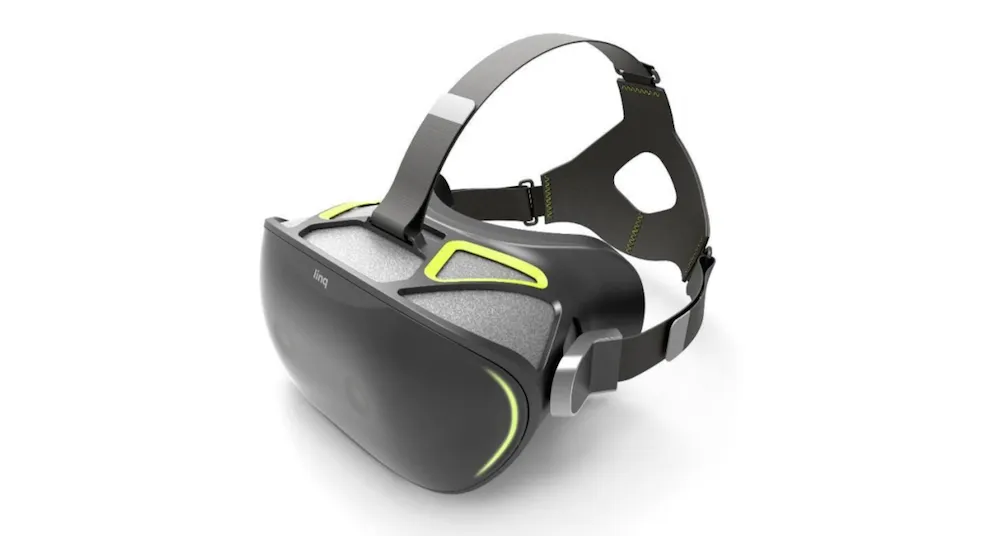Most high-end virtual reality headsets today use what’s called outside-in positional tracking. This means that they require some sort of outside camera, sensor or other location sensing aid in order to determine their location in 3D space. This system makes the headset dependent on static hardware, however, and so top engineers at Oculus, HTC and Google are all racing to crack the inside-out code first.
Amidst this clash of titans is Stereo Labs, a little-engine-that’s-trying to enable inside-out tracking on mobile VR headsets using simple, depth sensing peripherals. Today, Stereo Labs is announcing a new developer kit for a product called “Linq.” It’s goal is to bring entertaining mixed reality experiences into your living room.
According to Stereo Labs, “Through high definition stereo cameras, the headset blends the virtual and real worlds together in an immersive and photorealistic way. Linq understands the world around it and perceives people and objects in space up to 20m away.”
In a launch day release, the company further explained how its system works:
The magic comes from Linq’s front-mounted sensor, a special version of Stereolabs’ ZED stereo camera that replicates the way human vision works and perceives the world. Linq’s built-in camera scans the environment in real-time and provides 6DoF inside-out world-scale positional tracking without the need for any external sensor. Users can walk, jump, crouch and even dodge projectiles, with every movement captured in the MR experience itself. They don’t need to map out the entire playing field first in order to play.
This take on AR is what Oculus’ chief scientist, Michael Abrash called “Augmented Virtual Reality.” Rather than using transparent images and complex computerized lenses to change the world around you, Linq simply beams the real world inside a VR headset where the physical realm can be manipulated on the onboard digital screens.
This could be a major breakthrough for the immersive tech industry but that depends on how well Linq actually works. UploadVR had the chance to try an prototype of the Linq at our offices in San Francisco and we found the hardware to an impressive proof-of-concept.
The inside-out positional tracking on the Linq prototype worked better than their previous Gear VR + ZED camera combination. The tracking was accomplished using 2 RGB cameras, unlike most inside-out SLAM systems using infrared band. The dual camera depth mapping works by stereoscopic vision, similar to how Human depth perception works.
You could walk around a AR space, place virtual windows and videos in the room around you, have everything stay put without much drift. However, we did notice more motion-to-photon latency than any of the consumer headsets, but we were told that that’s to be expected for using combining 3rd party components to create a proof-of-concept device.
Linq’s system for hand tracking is also unique. It does not use infrared finger tracking a-la Leap motion but instead opts for a more blunt limb-tracking technique that simply clocks the relative positions between physical and digital objects in order to determine interactions.
Addressing the latency issue is Stereo Labs main goal as they move from the prototype and begin to release dev kits. To sign up for one of your own check out the Linq website.
Additional reporting by Az Balabanian.
–
Disclaimer: Stereo Labs rents an office at the Upload Collective – a co-working office in San Francisco. This story was run solely because of its merits and relevance to the wider VR community. No money was exchanged between either company for this article.



























